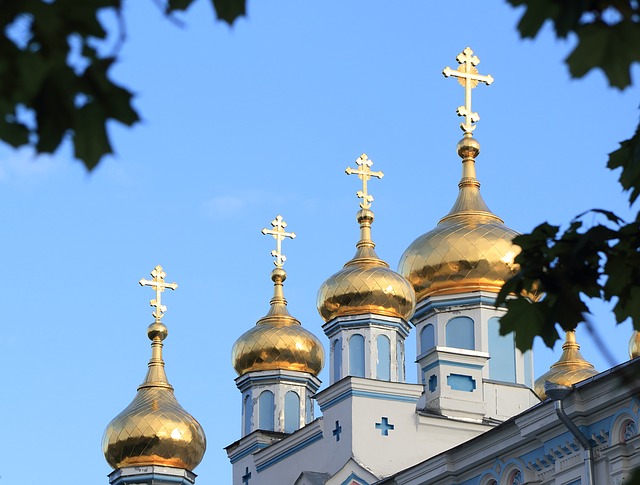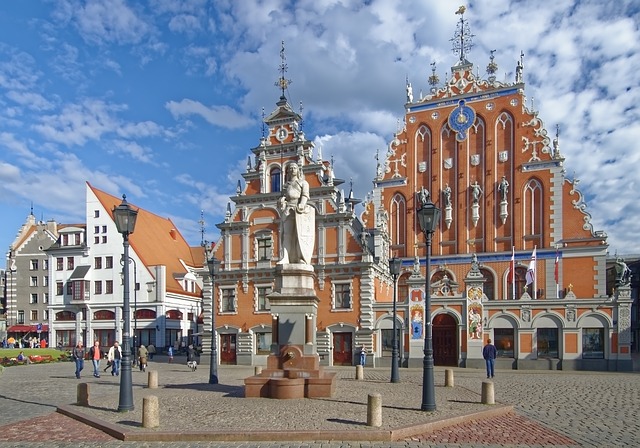
| Home » Regions » Latvia » Riga | |||
Riga, Latvia
 RIGA  Riga, officially founded in 1201, is the capital of the Republic of Latvia and the geographical center of the Baltic States. The city's cross-roads location between Western Europe and huge Eastern markets has made Riga very attractive for both tourism and business activities. During the Middle Ages Riga was a mighty seaport and the largest city in the Swedish Empire. Riga was a leading port for the Russian Empire in the 18th and 19th centuries, and a powerhouse center for commerce and trade in the entire region. The Hanseatic days are remembered in Old Riga through the historical Great Guild and Small Guild, as well as the rebuilt House of the Blackheads all of them originally artisans and craftsmens guilds. Fans of architecture will marvel at the variety of styles in the Dome Cathedral and the other sacred buildings of Old Riga. Design buffs will gape at one of the greatest collections of Art Nouveau architecture and design in the entire world. Historians will focus on the ancient buildings and museums of the formerly walled Old City. Families will enjoy the Riga Open-Air Ethnographic Museum, which features farms and other rural buildings which were brought to the park site lock, stock and barrel in the early part of the 20th century. There is something for everyone in Riga. The breathtaking quinquennial Latvian Song Festival assembles a choir of literally tens of thousands of performers. Song is an important part of many ethnic festivals, particularly the Summer Solstice festival known as Jani". When the walls of Medieval Riga came down in the mid-19th century, the city fathers had the outstanding idea of installing parks and gardens in the area which used to feature the ramparts. The result is one of the greenest city centres in all of Europe. Alongside the parks visitors will find some of the loveliest and most important buildings in the city. Particularly in Old Riga, but also in its surrounding area, there are countless restaurants, bars and nightclubs, featuring entertainment that will satisfy most any taste. During the summer, Old Riga bursts with open-air cafés and beer gardens. In winter, the central Liv Square boasts an ice skating rink. SightsRiga Central MarketOne of the largest in Europe, the market is partly outdoors and housed in old German blimp hangers. Imagine a complete building full of cheeses and another selling meat. A great place to purchase some hand knitted wool socks for that special person at Christmas. Par DaugavaPar Daugava (over the Daugava River West bank) provides a wonderful photo opportunity of the riga Old City and skyline. Year around, the best time to visit is close to sunset which may be quite late in the summer and quite early in the winter. Take a camera! Old TownThe Agenskalns District Riga is home of some historic old wooden buildings dating back to the early 1900s. Take Tram 4 or 5 from the Old City. Exit Nometnu Street (first stop after Park Maritim Hotel). Walk along Nometnu street in both directions and just let your mind go back in time. Imagine what it would have been like the day that these marvelous buildings were dedicated. BeachesLatvias seaside beaches are enjoyable year around. Jurmala is only 30 minutes west by train or minibus. Take the train marked Dubulti and stop at the Majori station. Walk along the beach on the fine white sand; enjoy lunch or dinner at one of the cafes; or buy your special someone some Amber jewellery at one of the small shops. Sigulda and KrimuldaSigulda and Krimulda (1 hr East of Riga in the Gauja river valley) is home to three 800 year old medieval castles. All three castles are easily visited in one afternoon. The grounds of the Turaida castle are extensive with a staffed museum. A complete Latvian sauna is on display as well as the famous grave of the Rose of Turaida. Easy access by train, bus or car. If you take public transportation then some walking is required. Rundale Palace and MuseumRundale Palace and museum (2 hrs South of Riga) One of the most outstanding monuments of Baroque and Rococco art in Latvia. Built between 1736 and 1740 as the summer residence of the Duke or Courtland. The palace with 2 floors has 138 rooms. Designed by famous Italian architect Francesco Bartolomeo Rastrelli who also was responsible for the magnicifient Winter Palace in St Petersburgh. A rental car is required but you do not need to hire a guide. |












